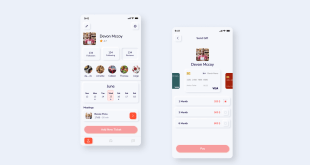As the digital landscape continues to evolve, web designers are constantly seeking innovative ways to enhance user experiences. One such trend that is making waves in the industry is Voice User Interface (VUI). With the rise of virtual assistants and smart speakers, VUI has emerged as a powerful tool to provide hands-free and seamless browsing experiences. In this comprehensive blog, we delve into the world of VUI in web design and explore how it’s revolutionizing the way users interact with websites.
The Power of Voice User Interface (VUI)
Voice User Interface (VUI) is a technology that enables users to interact with digital devices using spoken language. It leverages natural language processing (NLP) algorithms to understand user commands and respond appropriately. The convenience of VUI lies in its hands-free nature, allowing users to browse websites, access information, and perform tasks with just their voice. With the increasing popularity of virtual assistants like Siri, Alexa, and Google Assistant, users have grown accustomed to the ease of voice commands. Integrating VUI into web design taps into this familiarity, making the user experience more intuitive and user-friendly.
Web Design and the VUI Experience
To create a successful VUI in web design, it’s essential to consider several factors that can enhance the user experience:
Natural Language Understanding
A crucial aspect of VUI is its ability to comprehend natural language. By employing sophisticated NLP algorithms, VUI can understand context and intent, enabling more accurate and relevant responses to user queries.
Adapting to User Behavior
VUI technology continuously learns from user interactions, enabling it to adapt to individual preferences and behavior patterns. This personalization enhances the browsing experience, providing users with tailored results.
Minimizing Cognitive Load
With traditional browsing, users need to scan through text and make selections. VUI reduces cognitive load by simplifying interactions. Users can now perform complex tasks with a few spoken words, making the experience more efficient.
Voice Commerce
VUI opens up new possibilities for e-commerce. Users can now make purchases, track orders, and manage their accounts using voice commands, streamlining the shopping process.
Accessibility and Inclusivity
VUI empowers individuals with disabilities or those with limited dexterity to access the web easily. It breaks barriers and fosters inclusivity in web design.
The Impact on SEO and Web Rankings
As web designers embrace VUI, the landscape of SEO is also evolving. Search engines like Google are adapting to the shift in user behavior and are placing greater emphasis on voice search results. Here’s how VUI affects SEO and web rankings:
Long-Tail Keywords and Conversational Queries
With voice search, users tend to ask more conversational questions. Web designers must optimize content with long-tail keywords and answer-based formats to match these queries effectively.
Local SEO Opportunities
Voice searches are often location-specific, presenting valuable opportunities for businesses to optimize for local SEO and appear in relevant voice search results.
Featured Snippets and Position Zero
VUI devices often read out the featured snippets as responses to user queries. Web designers can capitalize on this by aiming for position zero to increase visibility and traffic.
Page Speed and Mobile-Friendly Design
VUI users seek quick and relevant answers. Page speed and mobile-friendly design become critical factors for ranking higher in voice search results.
Structured Data Markup
Using structured data markup allows search engines to understand the content better, increasing the chances of appearing in voice search results.
Final Words
Voice User Interface (VUI) in web design is reshaping the way users interact with digital platforms. Its hands-free and intuitive nature opens up new possibilities for enhanced user experiences. By optimizing web design for VUI and staying ahead of the SEO curve, businesses can take advantage of this emerging technology to improve rankings and engage their audiences effectively.
Commonly Asked Questions
Q1: How does Voice User Interface (VUI) impact website accessibility?
A1: VUI enhances website accessibility by allowing users with disabilities or limited dexterity to navigate and interact with websites using voice commands, promoting inclusivity.
Q2: Is VUI only applicable to mobile devices?
A2: No, VUI can be integrated into various digital devices, including smart speakers, smart TVs, and desktop computers, providing a seamless experience across platforms.
Q3: How does VUI affect user behavior on websites?
A3: VUI simplifies interactions, reducing cognitive load for users. It also encourages more conversational and natural language queries, impacting keyword strategies.
Q4: Can VUI technology be multilingual?
A4: Yes, VUI can support multiple languages, making it accessible to users worldwide and broadening the reach of websites.
Q5: Does VUI impact traditional visual web design?
A5: While VUI offers an alternative browsing method, visual web design remains crucial. A harmonious blend of both ensures a comprehensive user experience.
 webfily
webfily



